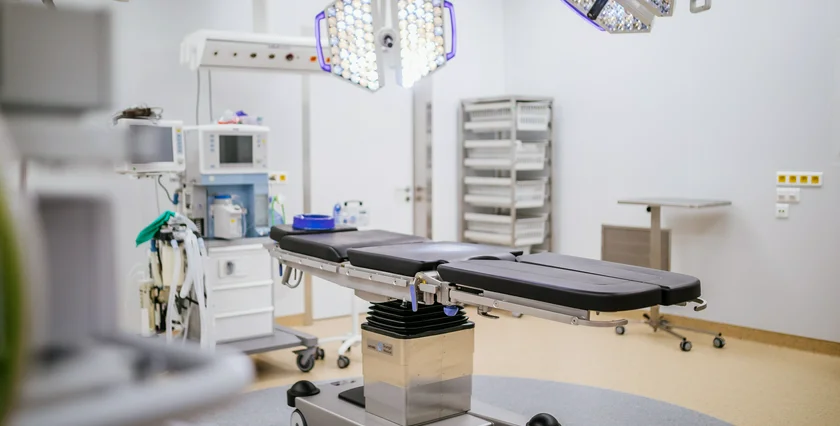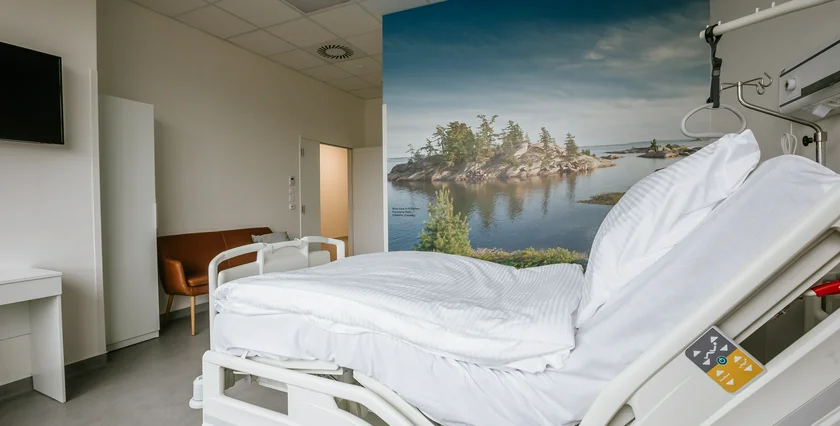Canadian Medical has expanded its one-day surgery care with the opening of a new vascular center in Prague 5. The newly built outpatient facility, which started operating in June, complements the range of one-day surgeries offered at Canadian Medical’s nearby Waltrovka Clinic.
The Canadian Medical vascular center specializes in comprehensive diagnostics and minimally invasive treatments of varicose veins at all stages. The new facility offers numerous outpatient procedures, including aesthetic mini-phlebectomy, laser ablation (EVLT), sclerotization and the innovative VenaSeal method, which uses venous adhesive.
“We treat all forms of chronic venous insufficiency, including leg ulcers. We provide care to clients with complicated diagnoses that are not suitable for conventional therapy under general anesthesia. All procedures are performed on an outpatient basis with local anesthesia, allowing for a quick return to regular activities immediately after the procedure,” says Dr. Jan Bafrnec, a specialist in general and vascular surgery and head physician of the new Canadian Medical vascular center.
Dr. Jan Bafrnec is a specialist in general and vascular surgery with over 10 years of experience. After graduating from Charles University in 2007, he became certified in general surgery in 2014 and vascular surgery in 2022. He focuses on laparoscopic, endovenous, and oncovascular surgery. Since 2011, Dr. Bafrnec has been a surgical consultant at the Royal Vinohrady Teaching Hospital and an assistant professor at Charles University, actively engaged in clinical research and publishing.
Comprehensive care delivered under one roof
Diagnostics is a key component of care at the Canadian Medical vascular center. During the initial consultation, a vascular surgeon will perform a complete physical and ultrasound examination. Other imaging methods, such as CT or MRI scans, are rarely used. An examination is also recommended for clients with small capillaries, where significant impairment of the main superficial veins may be revealed. A “tailored treatment” is then proposed, and the client is scheduled for an outpatient procedure at a specific time.
Dr. Bafrnec explains that their clients are treated by a qualified team of doctors with international experience, who follow the latest knowledge and international guidelines. He also noted that their procedure room is equipped with modern devices for advanced surgical methods.
One-day surgeries, allowing patients to return home a few hours after their procedure is completed, are more desirable for many people than long-term hospitalization. Recovery takes place in a home environment, positively affecting the patient’s mental wellbeing and accelerating treatment.
Treatment is advised primarily for symptomatic patients with swelling, cramps, pain and a feeling of heavy legs. The goal is to alleviate symptoms and prevent the progression of the disease to a more serious stage, such as leg ulcers. Conservative therapies – venopharmaceuticals, compression therapy and lifestyle changes – can be effective for milder forms of the disease, while more severe cases require surgical intervention. Procedures are performed in a modernly equipped procedural room, and, for greater comfort and peace, music can be played upon request.
Chronic venous insufficiency affects up to 80 percent of population
Chronic venous insufficiency (CVI) is a health issue that affects up to 80 percent of the population. This condition disrupts blood circulation in the veins, particularly in the lower limbs, where the veins lose their ability to effectively pump blood. This leads to stagnation and swelling in the legs. Although CVI is common, it can pose serious health risks if left untreated
The disease can advance from minor enlarged capillaries to visible varicose veins to leg ulcers. The most common symptoms include vague pains, swelling, and visible varicose veins. In the initial phase, CVI may be asymptomatic, but as the disease progresses, inflammation, superficial thrombosis and leg ulcers can occur. In some cases, CVI can also lead to a pulmonary embolism.
How do you make an appointment?
It is crucial not to underestimate the initial symptoms and difficulties of CVI and to seek expert help as soon as possible. Those interested in a treatment can schedule an initial consultation with a doctor, who will choose the most appropriate treatment method based on their health condition and plan the date of the procedure.
“The demand for our services is high, especially since diagnoses and surgeries are performed by a certified vascular surgeon. Clients do not need any referral from a doctor for examinations at our facility. They just need to make an appointment,” says Radim Stein, operations manager for the Waltrovka Clinic as well as the vascular center.
Care is available to all clients with or without Czech health insurance or foreign clients on a direct billing basis.
The new Canadian Medical vascular center is strategically located in the Aviatica building, near the Waltrovka Clinic.












 Reading time: 3 minutes
Reading time: 3 minutes 
























